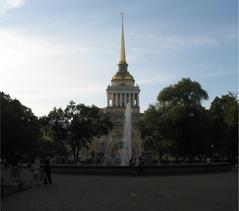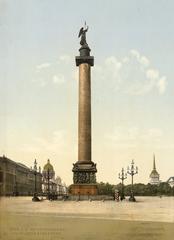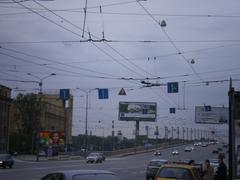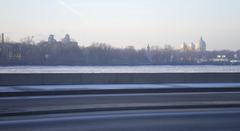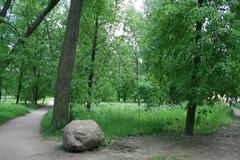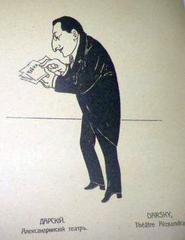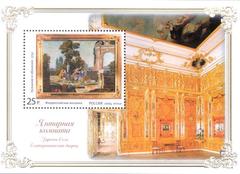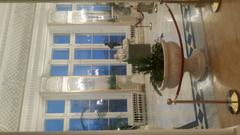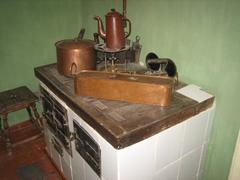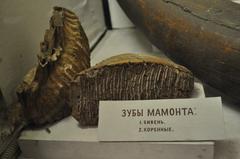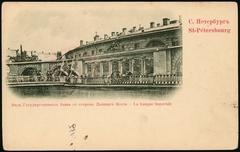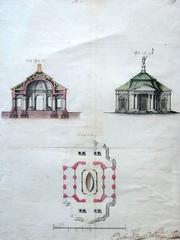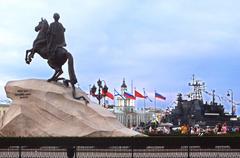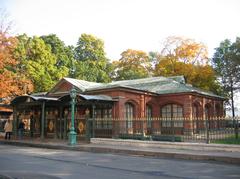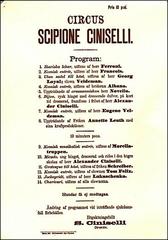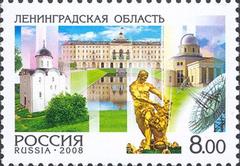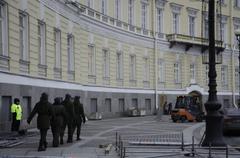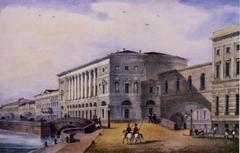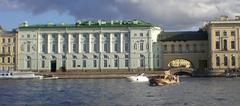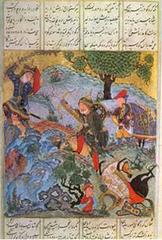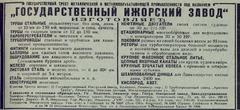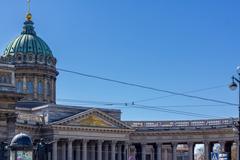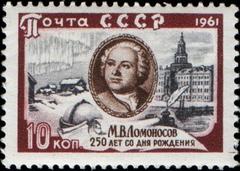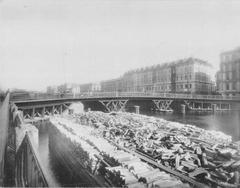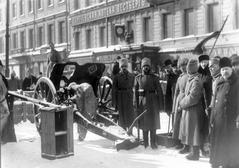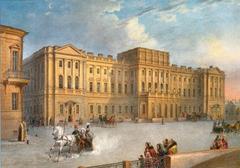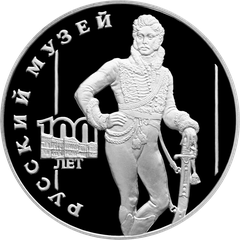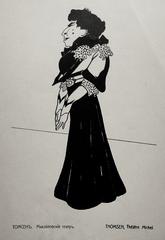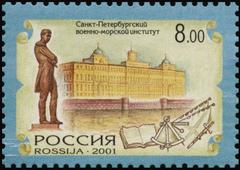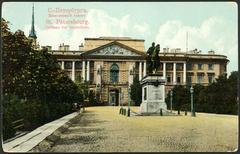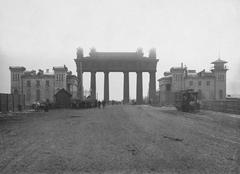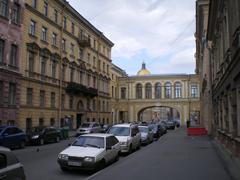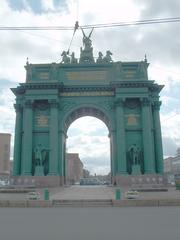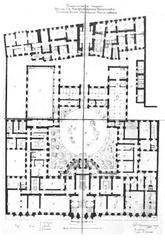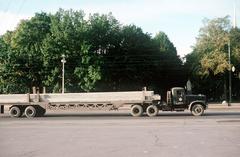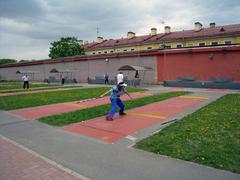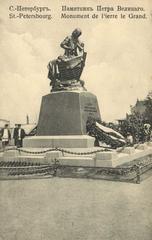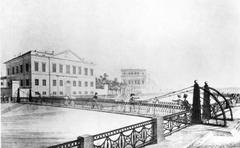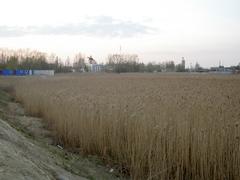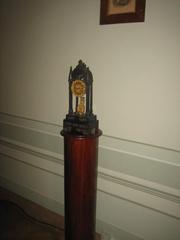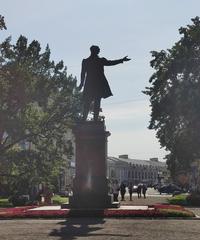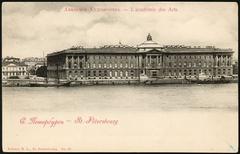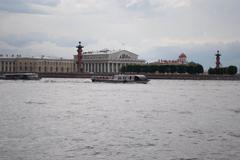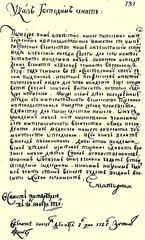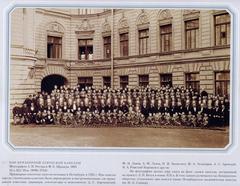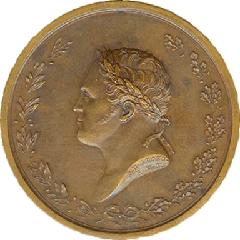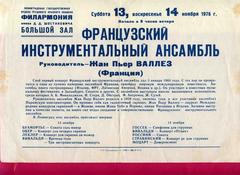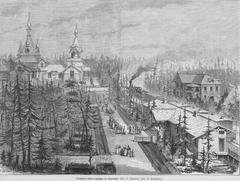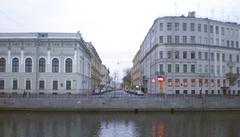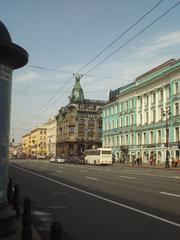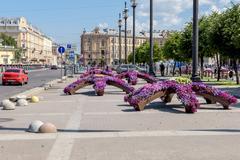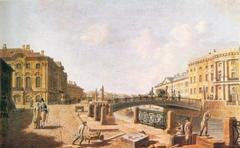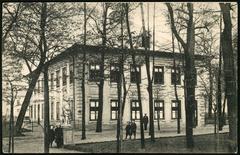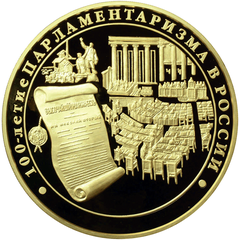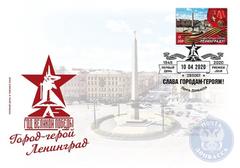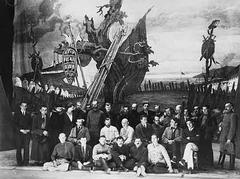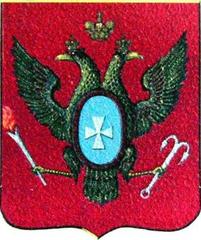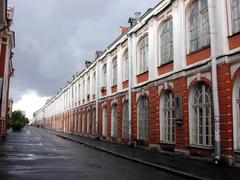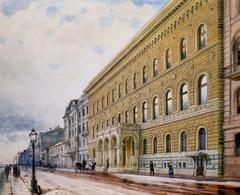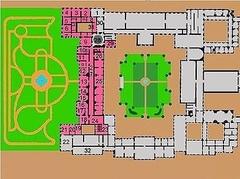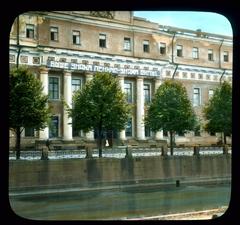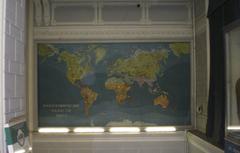
Dacha Of The Hospital Saint Petersburg: Visiting Hours, Tickets, and Historical Information
Date: 04/07/2025
Introduction
Nestled on the outskirts of Saint Petersburg, the Dacha Of The Hospital stands as a testament to Russia’s enduring tradition of dachas—countryside retreats that interweave history, architecture, and cultural heritage. From their 17th-century origins as tsarist land grants, dachas evolved into cherished sanctuaries for leisure, family, and community, especially around Saint Petersburg, the former imperial capital (Matador Network; UNESCO). The Dacha Of The Hospital, in particular, has played a unique role, serving as a retreat for hospital staff and patients across the Imperial, Soviet, and modern eras, and is now a protected heritage monument reflecting both healthcare history and architectural innovation (saint-petersburg.com; GSOM SPbU).
This comprehensive guide explores the dacha’s historical context, architectural features, visitor information, preservation efforts, and practical tips, offering everything you need to plan a rewarding visit.
Table of Contents
- Introduction
- Dacha Tradition in Saint Petersburg: Historical Overview
- Dacha Of The Hospital: History and Cultural Significance
- Architecture and Site Highlights
- Visiting Information
- Location and Getting There
- Socio-Cultural Practices and Modern Relevance
- Preservation, Restoration, and Community Engagement
- Practical Travel Tips
- Nearby Attractions
- Frequently Asked Questions (FAQ)
- Visuals and Media Resources
- Conclusion and Visitor Recommendations
- References
Dacha Tradition in Saint Petersburg: Historical Overview
Dachas, or countryside retreats, are deeply woven into Russian culture. The tradition began in the 17th century with land grants from the tsar—“dacha” stemming from “davat,” meaning “to give”—and flourished as symbols of privilege and cultural refinement, especially under Peter the Great (Matador Network). Saint Petersburg’s founding as Russia’s “window to the West” spurred the proliferation of suburban estates and dachas, used by nobility and cultural elites for leisure, creative pursuits, and gatherings (UNESCO). By the late 19th century, dachas also became accessible to professionals, including doctors, teachers, and artists, forming vibrant summer colonies along the Gulf of Finland and the Karelian Isthmus (Academia.edu).
Dacha Of The Hospital: History and Cultural Significance
The Dacha Of The Hospital, sometimes referred to as Mikhailovskaya Dacha, stands out for its historical association with medical institutions. Originally established as a summer residence for Grand Duke Mikhail Romanov, it later served as a tranquil retreat for hospital staff and patients, particularly valued during the Soviet era as a space for rest and rehabilitation (GSOM SPbU). The estate’s evolution from noble retreat to communal healthcare haven encapsulates a broader narrative of Russian social change.
Architecturally, the dacha combines Russian Revival, Art Nouveau, and Finnish influences. Hallmarks include wooden facades, ornate verandas, landscaped gardens, and traditional banya facilities, all reflecting the values of harmony, health, and leisure (Folkways Today).
Architecture and Site Highlights
Design and Layout
The estate exemplifies 19th-century Russian estate architecture, blending neoclassical and eclectic elements with picturesque landscape design. Notable features include:
- Grand and Small Palaces: Ornate residences with decorative facades and sweeping staircases.
- Church of St. Olga: Designed by David Grimm, this 1864 addition brings ecclesiastical grace to the estate.
- Service Buildings: Such as stables, kitchen, and gardener’s quarters—functional yet aesthetically integrated.
- Landscaped Grounds: Lush gardens, rare trees, and winding paths that invite exploration.
Restoration and Adaptive Reuse
After periods of neglect, the estate underwent extensive restoration, preserving historic structures and adapting the former stables into the Main Academic Building of the GSOM at Saint Petersburg State University (GSOM SPbU; Archtene). This balance of conservation and adaptive reuse ensures the site’s continued relevance.
Visiting Information
Opening Hours
- Thursday–Sunday: 10:00 AM – 6:00 PM
- Monday–Wednesday: Closed
Note: Hours may differ on public holidays or during special events. Always verify via the official GSOM SPbU website.
Tickets and Guided Tours
- Adults: 300–500 RUB
- Students/Seniors: 150–300 RUB
- Children under 7: Free
- Guided Tours: Add 200–300 RUB, available in Russian and English (advance booking required)
Tickets can be purchased online or at the entrance. Guided tours are highly recommended for in-depth historical and architectural context.
Accessibility
The estate provides wheelchair access to main exhibition rooms and outdoor paths. Due to historic architecture, some areas may not be fully accessible—contact the administration for specific needs.
Facilities and Photography Policy
- Restrooms and accessible facilities are available in the main buildings.
- Photography is permitted for personal use outdoors. Professional photography or indoor shoots require prior approval.
Location and Getting There
The Dacha Of The Hospital is located approximately 25 km northwest of central Saint Petersburg, near the Gulf of Finland and close to dacha communities of the Karelian Isthmus. Access is possible via:
- Public Transport: Bus route 123 or suburban trains to Zelenogorsk, then a short taxi or local bus ride
- By Car/Taxi: About 45 minutes from city center (traffic dependent)
- For Pushkin-based dachas: Take a suburban train from Vitebsk Station, then local buses/marshrutkas (saint-petersburg.com)
Socio-Cultural Practices and Modern Relevance
Dachas continue to play a central role in Russian life, serving as spaces for family gatherings, gardening, and traditional rituals such as the banya. The Dacha Of The Hospital exemplifies these traditions, hosting seasonal events, tea ceremonies, and educational workshops (Folkways Today). The culture of growing organic produce, relaxing in nature, and participating in communal activities remains strong among urban dwellers.
Preservation, Restoration, and Community Engagement
Legal Status and Recognition
The estate is officially protected as a cultural heritage monument, benefiting from legal safeguards and state restoration programs (GSOM SPbU). Its inclusion in preservation strategies underscores the value of wooden architecture in the Saint Petersburg region.
Institutional and Community Initiatives
Preservation is a collaborative effort between federal and local authorities, academic institutions, and community groups. Restoration projects prioritize historical authenticity and structural safety, using traditional materials alongside modern conservation methods (Archtene). Community engagement includes educational outreach, fundraising, and participation in guided tours and cultural festivals.
Technological Innovations
Digital documentation, 3D scanning, and virtual reality tours broaden access and support research, while climate adaptation measures ensure long-term resilience (Moments Log).
Practical Travel Tips
- Best Time to Visit: Spring and summer for optimal weather, garden blooms, and outdoor events.
- Dress Appropriately: Comfortable shoes for walking; bring a sweater or light jacket.
- Cash and Cards: Some facilities may only accept cash.
- Combine Visits: Explore nearby sites such as Peterhof Palace, Tsarskoye Selo, or the Gulf of Finland beaches (TravelSetu).
- Download Audiala: Use the app for guided audio tours and up-to-date visitor information.
Nearby Attractions
Enrich your visit by exploring:
- Peterhof Palace: Renowned for its fountains and imperial grandeur (Peterhof Palace Information)
- Tsarskoye Selo (Pushkin): Home to the Catherine Palace’s famous Amber Room
- Karelian Isthmus: Scenic forests, lakes, and dacha communities
Frequently Asked Questions (FAQ)
Q: What are the Dacha Of The Hospital visiting hours?
A: Thursday–Sunday, 10:00 AM–6:00 PM. Closed Monday–Wednesday; check for holiday exceptions.
Q: How much are tickets?
A: 300–500 RUB for adults; discounts for students, seniors, and children.
Q: Is the dacha accessible for visitors with disabilities?
A: Main areas are accessible; some historic sections may not be.
Q: Are guided tours available in English?
A: Yes, with advance booking.
Q: Can I take photos?
A: Yes, outdoors for personal use; restrictions apply indoors.
Q: What is the best way to get there?
A: Public transport to Zelenogorsk or Pushkin, then local taxi/bus; about 45 minutes from the city center.
Q: Are there facilities on site?
A: Yes, including restrooms and a small café; bring snacks for longer visits.
Visuals and Media Resources
- Virtual Tours and Maps: Available on the GSOM SPbU website
- Photo Gallery: Explore images of the architecture, interiors, and gardens with detailed alt text such as “Dacha Of The Hospital Saint Petersburg” and “Russian hospital dacha architecture.”
Conclusion and Visitor Recommendations
The Dacha Of The Hospital stands as a beautifully preserved symbol of Saint Petersburg’s dacha culture, offering visitors an immersive experience in Russian history, architecture, and traditions. Its tranquil environment, rich cultural programming, and ongoing preservation make it a must-visit site for anyone exploring the region beyond the city’s iconic landmarks.
For an enriched experience, plan your trip during the warmer months, book a guided tour, and leverage digital resources like the Audiala app. Take the opportunity to connect with local traditions and discover the enduring legacy of Russia’s countryside retreats.
References and Further Reading
- Matador Network
- UNESCO
- Academia.edu
- Folkways Today
- GSOM SPbU
- Archtene
- Moments Log
- TravelSetu
- Official Saint Petersburg Tourism Website
- saint-petersburg.com
- Peterhof Palace Information
- guidetopetersburg.com

